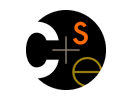|
|
|

|
|
- Course Goals
-
This class provides an introduction to Computer Science in general and programming in particular. The primary goal is for students to learn the general principles of programming, including how to design, implement, document, test, and debug computer programs. To make these principles concrete, we will study and use the Java programming language. Another goal of this course is to provide the background necessary for students who wish to continue to CSE 143. Students who feel they already have adequate preparation may take CSE 143 immediately and if successful in that course, may receive credit for 142. Here is what the CSE undergraduate advisor has to say about this: If you pass CSE 143 with a 3.0 or higher, you can take a copy of your grade to Schmitz Hall and receive AP credit for CSE 142. You'll never receive a grade for 142, but you will receive the credit. There is really no point at all to taking 142 and 143 at the same time, I would highly suggest that if you feel well enough prepared to take 143, you should drop CSE 142.
- Prerequisites
- No prerequisites are listed in the catalog. However, we assume that students in this course have met the minimum requirements for admission to UW, and in particular: three years of mathematics, at least at the level of geometry and advanced (second-year) algebra; two years of science; and four years of English. The course is not recommended for students who are at a remedial level in English or mathematics. We also assume a familiarity with computers, files, folders, email, web browsing, and the like.
- Course Format
- The class meets three times a week for lectures. Also, once a week you meet with your TA and the other members of your quiz section. On your own time, you have homework to do, mostly computer programs to design and debug.
You will be working on homework more or less all the time, with frequent,
inflexible deadlines. You will need to use the Internet to get and turn in assignments and to keep in touch with the course. Many students who take this course report that it makes great demands on their time, so be prepared to spend time working on it.
- Topics Covered
-
- computer hardware and software relationships
- computer programs
- creation of software objects and method calls
- defining new methods and classes
- expressions, values, and types
- conditionals
- iteration and collections
- interfaces
- composition and inheritence
- Textbook
- The textbook for the class is An Introduction to Programming and
Object Oriented Design using Java by Jamie Niņo and Frederick Hosch
(available for purchase at the University Bookstore). (web
site) (related
resources)
- A set of notes called An Introduction to Programming In Java
by Ben Dugan will be available as a course packet from Professional
Copy and Print, 4200 University Way (one block S. of the University
Bookstore). The notes are also available on-line as a single PDF file
(cse142-book.pdf) and as individual
chapters in html (Table of Contents).
These notes are required reading for the course; we recommend but do
not require that you have a printed copy.
- Attendance
- Your attendance is expected at all lectures and quiz section meetings. It's summer and it will be sunny out some days (presumably!) but programming is not a skill that you can learn by reviewing a few notes every now and then. You need to be in class to hear the discussions, see the demos, and actively participate in learning the material. The lectures and section meetings are a chance to ask questions and see the class instructors and TAs do their programming thing. The staff all enjoy programming - part of the goal of this class is to help you see why that it is. It's not just that we're crazy ...
|


 CSE Home
CSE Home  About Us
About Us Search
Search Contact Info
Contact Info